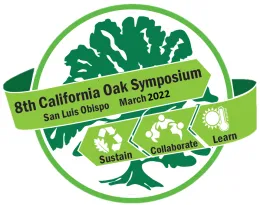#10

Reproduction and Recruitment of Blue Oak in the Sierra Nevada Foothills of California
M.V. Eitzel, Science & Justice Research Center, University of California, Santa Cruz
Susana Rodríguez-Buriticá, Instituto de Investigación de Recursos Biológicos Alexander von Humboldt, W. Stanley Harpole, German Centre for Integrative Biodiversity Research and Helmholtz Environmental Research Center UFZ, Rebecca Aicher, AAAS Center for Scientific Evidence in Public Issues, Loralee Lairos, Botany and Plant Sciences, University of California, Riverside, Mitchel McClaran, Arizona Experiment Station and University of Arizona, Tucson, and Katharine Suding, Ecology and Evolutionary Biology and Institute of Arctic and Alpine Research, University of Colorado, Boulder
California oaks suffer from recruitment problems due to a number of climate and management-related factors, including timing and presence of grazing. Our study examines these potential factors by quantifying reproductive success (numbers of new seedlings and their sizes) and survival and growth of the younger life stages (seedlings and saplings), and by exploring how the timing of grazing, topographical variables, and rainfall limit reproduction, growth, and survival for these life stages, helping to identify potential management and restoration strategies to enhance the population viability of blue oak. We followed a population of blue oak (Quercus douglasii) seedlings and saplings in the Sierra Nevada foothills, measuring adult seed production and initial seedling recruitment (number and size of new seedlings), seedling growth and survival, seedling recruitment to saplings (growing greater than 10 cm in height), and sapling growth and survival. We tested the impacts on these demographic processes of timing and intensity of grazing, light availability, water availability, and individual size. Seedlings were more sensitive to moisture availability while saplings were more sensitive to light availability. Individual level variables such as the previous year’s size impacted adult trees as well as seedlings and saplings, pointing to individual characteristics as an important component of demography. Grazing had a negative impact on seedling survival, sapling growth, and numbers of new seedlings, but the timing of the grazing mattered. High-quality, larger adult trees in good locations could be key in enabling early life stage transitions, though density-dependence and competition with the adult may mediate that beneficial effect. Future studies could examine the impact of competition with invasive exotic grasses and also how fire severity impacts these benefits of adult trees on early life stages. Ultimately a population model is needed to synthesize these data with information on other demographic transitions in order to establish population persistence.
